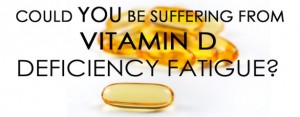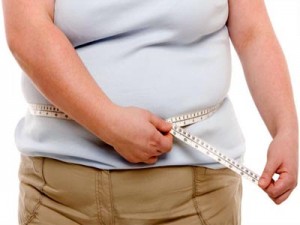7 Signs You May Have a Vitamin D Deficiency
3 John 1:2
Beloved, I wish above all things that thou mayest prosper and be in health, even as thy soul prospereth.
For anyone first reading the Health and Nutrition Update, please read this first: Your Health.
Also, please go to God’s Health System and subscribe to receive the updates.
Always remember that you are in charge of your health and not the doctors. Do not put your life in their hands without first seeking God and His health system.
Commentary
Experts have warned against sun exposure for many years and that has led to a tremendous increase in both the number of people wearing sunscreen and in the amount of sunscreen they use. While that may have health benefits in certain areas, it also has contributed to a deficiency in vitamin D3, probably the most essential vitamin there is for overall health.
Almost our entire elderly population (95%) is deficient in this essential vitamin, and as much as 50% of the general American population suffers from deficiency as well. Worldwide that number rises to 75%. Given how many areas of our bodies utilize vitamin D3 and how profound are the effects of a deficiency, this is cause for concern.
With numbers this high, the wise move would be to have your levels tested. While the only way to get a completely accurate reading is through blood tests, that shouldn’t deter you from trying to assess whether you have sufficient levels. The article below gives 7 signs that may indicate a deficiency, but even if you don’t have these symptoms you can benefit from testing which can be done easily in your own at home. A testing kit, produced by GrassrootsHealth is available by joining the D*Action Project for $65. Details are given in the article linked below, and by following the link for the project, above.
If everyone in the country had sufficient levels of D3, rates for certain cancers would be reduced by half and over a million deaths from chronic diseases related to this deficiency would be avoided. And that sun exposure you’ve been warned to avoid because it can cause cancer? While that may be true for certain types of cancer, it should be noted that women who have high sun exposure when young have a 70% reduction in the rate of breast cancer later in life.
We’ve written in previous blogs about the amount most of us need to take to reach optimum levels, generally 10,000 units daily, as well as the best source of D3 (other than the sun) which is lanolin. And if you’ve been diagnosed with fibromyalgia or chronic fatigue syndrome after complaining to the doctor about aches and pains, it may be that taking enough supplemental vitamin D3 to put you in the optimal (rather than normal) range can end those problems. Many people diagnosed with these illnesses actually are suffering from vitamin D deficiency instead.
7 Signs You May Have a Vitamin D Deficiency
“There are very few foods that actually have therapeutic levels of vitamin D naturally and even fortified foods do not contain enough vitamin D to support your health needs.
Despite its name, vitamin D is not a regular vitamin. It’s actually a steroid hormone that you are designed to obtain primarily through sun exposure, not via your diet.
If any of the following apply to you, you should get your vitamin D levels tested sooner rather than later.
1. You Have Darker Skin
2. You Feel “Blue”
3. You’re 50 or Older
4. You’re Overweight or Obese (or Have a Higher Muscle Mass)
5. Your Bones Ache
6. Head Sweating
7. You Have Gut Trouble”
Vitamin D for Depression, Dementia, and Diabetes Research has demonstrated that optimal levels of Vitamin D can improve many brain disorders like depression and dementia, including Alzheimer’s, by increasing the amount of chemicals that protect and heal cells. Vitamin D receptors also increase brain nerve growth when activated. Deficient individuals had between 53% and 120% higher risk for dementia, especially Alzheimer’s and deficient seniors were 11 times more likely to be depressed.
“Vitamin D may also exert some of its beneficial effects on your brain through its anti-inflammatory and immune-boosting properties.
Other recent research has found links between depression and dementia, and between vitamin D deficiency and depression. One eight-year-long study3 from Rush University Medical Center found that higher levels of depression translated into greater risk for dementia later on.
Bringing the focus of this article full circle is research showing that vitamin D may also play a role in type 2 diabetes; so now we have a number of cross-links between vitamin D and dementia, depression, and diabetes. One Indian study found that vitamin D and calcium supplementation in combination with exercise can aid prediabetic individuals by preventing the progression into full blown diabetes.
Keep in mind that if you opt for a vitamin D supplement, you also need to take vitamin K2. The biological role of vitamin K2 is to help move calcium into the proper areas in your body, such as your bones and teeth. It also helps remove calcium from areas where it shouldn’t be.
A robust and growing body of research clearly shows that vitamin D is absolutely critical for good health and disease prevention. Vitamin D affects your DNA through vitamin D receptors (VDRs), which bind to specific locations of the human genome. Scientists have identified nearly 3,000 genes that are influenced by vitamin D levels, and vitamin D receptors have been found throughout the human body.”
Health and Nutrition
The Science of the Midnight Snack: Why the body craves junk food late at night A recent study reveals that people crave fatty foods and sugars from 12 midnight to 4 a.m. It appears we’re “hard wired” for junk food cravings at night because the body demands lots of calories at that hour for an energy boost. The most popular items are ice cream, pound cake and French fries, according to a study of volunteers, published in the journal Obesity.
“Regardless of when they’d woken up, when they’d last eaten, and how much they’d eaten that day, the volunteers were hungriest at night. And while their desire for vegetables stayed more or less the same throughout the day, their hunger for sweet, salty, and starchy foods increased dramatically around 8 p.m.—suggesting that our appetite for junk is governed more by our internal body clocks than by genuine hunger.
One reason for this is fluctuation in the hormone cortisol, which tells the liver to release sugar into the blood. Because we don’t need as much energy at night, cortisol levels decrease, telling our bodies that it’s time to go to sleep—when we stay awake, though, we’re driven to compensate for the resulting blood-sugar drop by eating food. But what’s bad for our modern-day waistlines may have had an evolutionary benefit, said the authors of the Obesity study: Because the body burns fewer calories at night, the urge to consume more of them in later hours may have helped our ancestors stay nourished when food was scarce.
Another reason may be that end-of-day fatigue increases the temptation to indulge. When we’re tired, we make less of the hormone leptin, which brings on a satiated feeling, and more of the hunger hormone ghrelin. As a result, our sleepy brains pull a few tricks to nudge our bodies towards energy pick-me-ups in the form of calories. In one 2012 study, researchers found that when people were sleep-deprived, the reward centers of their brains lit up more when they looked at pictures of junk foods than when they saw pictures of healthy foods (in well-rested people, the brain response was roughly the same for both food groups).”
2 Things Diet Soda Does to Your Brain Brain diseases are appearing more frequently and at an earlier age. While risk factors such as age and sex are fixed, there are numerous factors which can be changed to reduce your risk.
“One simple change to lower your risk for Alzheimer’s and dementia is as simple as ditching the diet soda you drink:
These diet drinks usually include the artificial sweetener and food additive aspartame, which contains what Dr. Blaylock refers to as a powerful “excitotoxin.” Excitotoxins are substances added to certain foods and beverages that can literally stimulate nerve cells to death, causing gradual damage to your brain.
Dr. Blaylock is considered the foremost authority on the subject of excitotoxins such as aspartame and monosodium glutamate (MSG). He warns that they not only contribute to the escalation of neurodegenerative disease such as Alzheimer’s, but also to diverse chronic illness, including learning disorders, psychiatric conditions, even cancer.But you don’t need to just take Dr. Blaylock’s word on the risks of diet soda. Research presented at a recent conference of the American Stroke Association indicates that drinking diet soda daily is linked to a significantly higher risk of vascular events that correlate with vascular dementia.”
Average American Woman’s Waistline Grows to 39 Inches: CDC
Waistlines of Americans continue to grow by the year, and more women suffer from a fast size rise than do men, new government research shows. Data from roughly 33,000 people were examined in the study. Forget the old standard of 36-24-36, the average woman’s waistline is 38.8 inches, with more than an inch and a half increase between 1999 and 2012. Anything over 35 inches for women and 40 inches for men is considered obese, with abdominal fat a risk factor in heart disease and diabetes.
While researchers say they don’t know why women are expanding more rapidly than men or why waistlines are expanding at all when obesity seems to have leveled off, we have some theories of our own and they center around diet. The prevelance of HFCS (high fructose corn syrup) and soy (which has effects similar to taking estrogen) are two possible reasons. See our last post for information about the increasing use of HFCS. it is now in almost all processed foods and turns immediately to fat in the body. Just check the label for ingredients.
Based on their waist circumference, 54 percent of Americans were abdominally obese in 2012, up from 46 percent 13 years earlier.
Waist circumference is a simple tool that reflects the amount of total body fat and intra-abdominal body fat. Like body mass index (BMI), which is a calculation based on height to weight, it is used to predict heart disease risk.
No single reason for the bulking up stood out. But the researchers speculated that sleep disruption, certain medications and everyday chemicals known to be endocrine disruptors may possibly play a role.
Prescription Drugs
Antibiotics in early life may alter immunity long-term
“A new study aims to help scientists understand how different antibiotics affect bacteria that play a positive role in promoting a healthy immune system. “This is the first step to understanding which bacteria are absolutely necessary to develop a healthy immune system later in life,” says the lead researcher.”
Xanax, Valium Raise Alzheimer’s Risk: Study
“Older adults who habitually use sedatives for anxiety or insomnia may have a heightened risk of developing Alzheimer’s disease, a new study suggests.
The drugs in question are benzodiazepines, a widely prescribed group of sedatives that include lorazepam (Ativan), diazepam (Valium) and alprazolam (Xanax). Older adults commonly take the drugs for anxiety or insomnia, often long-term, according to background information in the study.
That’s despite the fact that guidelines call for only short-term use of the drugs, at most. In 2012, the American Geriatrics Society (AGS) put benzodiazepines on its list of drugs considered “potentially inappropriate” for seniors, because of risks like confusion, dizziness and falls.
The current study isn’t the first to link benzodiazepines to Alzheimer’s risk, but it adds to evidence that longer-term use of the drugs — beyond three months — might be a risk factor….”
Babylonian Health System
Scientist Working on Gov’t Ebola Drug Joked about Culling Population with GMO Virus The experimental Ebola treatment recently used for Americans who contracted the virus while caring for patients in Africa “was developed by a leading bioengineering scientist from the University of Arizona.”
Dr. Charles Arntzen was caught making jokes on camera about culling the population through a “better genetically engineered virus” designed to wipe out humanity, making reference to the film, “Contagion“.
“Has anybody seen ‘Contagion’? That’s the answer! Go out and use genetic engineering to create a better virus… 25 percent of the population is supposed to go in Contagion.”Among the many high level projects Dr. Arntzen has worked on for DARPA, as well as private biotech industry include an edible vaccine with genetically engineered medicine/vitamins grown into foods like bananas and even work on bioterrorism vaccine antigens for U.S. Biowarfare Defense alongside Mitch Hein, the founder of Epicyte – the biotech firm that created spermicidal anti-bodies grown in corn to slow human reproduction.
Pet Health
Dogs feel jealousy and seek attention just like humans People attributing human emotions to their pets have long been criticized for making anthropomorphic claims. They’ll often hear statements like, “It’s only a dog; it can’t feel anything like that.” But after studying 36 dogs via videotape in their owners’ homes, researchers found jealousy was apparent in response to being ignored by owners. The study provided owners with three triggers to test emotional reaction. The triggers were “an animated stuffed dog that barked and wagged its tail, a jack-o-lantern and a pop-up children’s book that played melodies.”
The dogs responded to the fake dog more often than to the other items, displaying clear signs of jealousy, including strong distress that a rival was usurping “a loved one’s attention.” They used a variety of methods to regain the attention of their owners and repair the relationship.
“Jealousy is very much considered a complex, social-structured human trait; however, anyone that has a pet will likely tell you about a time when that pet acted jealous.
…Dogs were twice as likely to try to push or touch their owner while they played with the fake dog. One-third of the dogs tried to insert themselves between the owner and the animated dog, and one-quarter snapped at the fake dog. One dog reacted aggressively to both the jack-o-lantern and the pop-up book.
In regard to the dogs that didn’t show jealousy, “It’s possible these are not very bright dogs, who didn’t even realize these items were something to be jealous over, or maybe they were very bright dogs who were not fooled by these inanimate objects. Another possibility is that the bond may not have been very strong with the owner.”
Conclusion
Your physical health is very important, but of even greater importance is your spiritual health. Man suffers from a fatal spiritual disease called sin, which always leads to death. Romans 6:23 For the wages of sin is death; but the gift of God is eternal life through Jesus Christ our Lord.











